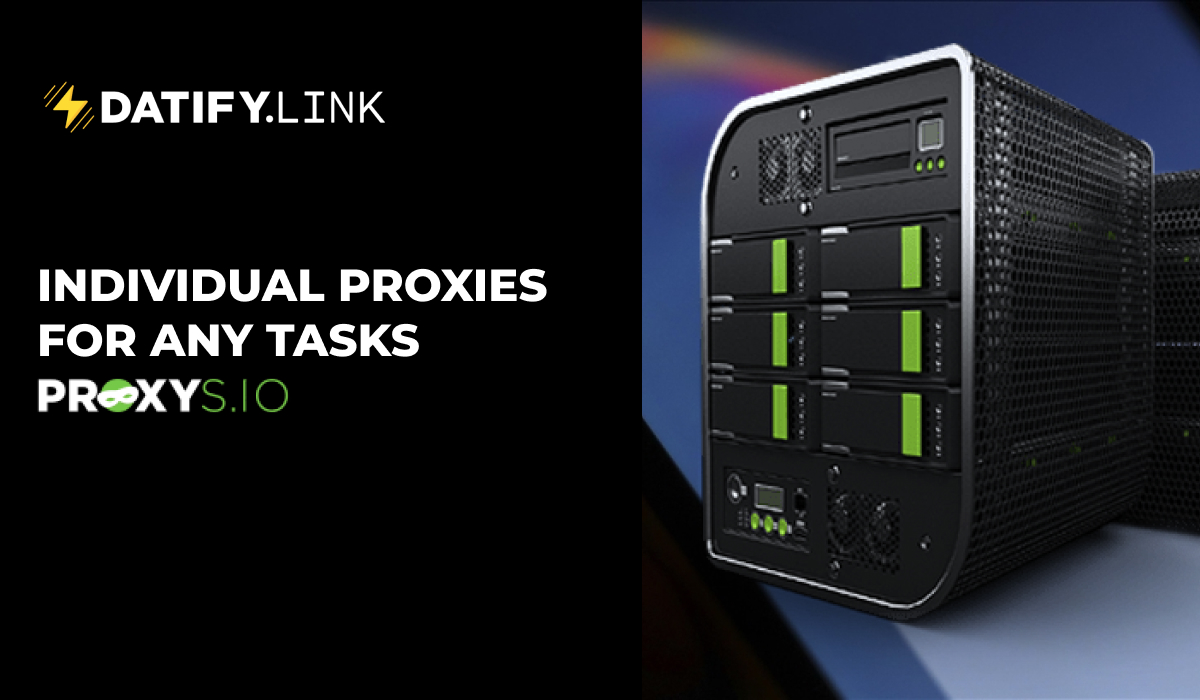The Power of Affiliate Marketing: Unlock Your Earning Potential
Affiliate marketing has become one of the most popular ways to earn money online. With the rise of e-commerce and the increasing number of businesses moving their operations online, affiliate marketing has become a powerful tool for anyone looking to make money through their online presence.
Just have a look at the statistics based on affiliate marketing spending in the United States from 2010 to 2022. According to the Statista, the U.S. affiliate marketing spend is due to reach 8.2 billion U.S. dollars by 2022, up from 5.4 billion recorded in 2017.

So why are we here? I’m going to explore the basics of affiliate marketing and how it can help to unlock your earning potential. I’ll also look at some tips and tricks for success in this rapidly growing industry. So, whether you’re a blogger, social media influencer, marketer or website owner, read on to learn how to tap into the power of affiliate marketing.
What is affiliate marketing, basic terms, and concepts
Affiliate marketing is a performance-based marketing strategy that involves promoting other businesses’ products or services and earning a commission for each sale made through your unique affiliate link.
The basic terms and concepts of affiliate marketing include:
1. Affiliate: The person promoting the products or services of another business and earning a commission for each sale made through their affiliate link.
2. Advertisers: The business that offers products or services for sale and pays affiliates for sales made through their unique affiliate link.
3. Commission: The percentage of the sale that the affiliate earns for promoting the merchant’s products or services.
4. Smartlink: The unique link that tracks the sales made by the affiliate and ensures they receive the commission.
5. Cookie: A small piece of data that is stored on the user’s browser and tracks their activity on the merchant’s website. It helps attribute sales to the correct affiliate.
6. Conversion rate: The percentage of clicks on the affiliate link that result in a sale.
7. Affiliate network or program: A platform that connects advertisers with affiliates and facilitates payments and tracking of sales.
Click the link to find the full list of terms for AdTech.
What is an advertising offer
An advertising offer in affiliate marketing refers to a specific promotion or campaign that an advertiser presents to potential affiliates. This offer typically includes details about the product or service being advertised, the commission rate that affiliates will receive for promoting it, and any specific terms and conditions that apply to the offer. Affiliates can choose to accept or reject the offer based on their own preferences and criteria, and may then promote the product or service using a variety of marketing channels such as social media, email, or website advertising. Successful promotion of the offer can result in increased sales and revenue for both the advertiser and the affiliate.
Webmasters should pay attention to offer geo requirements, because it can impact their ability to promote the offer effectively and earn commissions. If an offer has geo restrictions, it means that it is only available for promotion in specific regions or countries. If a webmaster promotes such an offer outside the allowed regions or countries, they may not earn any commissions even if they generate clicks or conversions. This can result in a waste of time and resources for the webmaster.
Additionally, promoting an offer in a region or country where it is not allowed can also result in penalties or even a ban from the affiliate program. Therefore, it’s important for webmasters to carefully read and understand the offer geo requirements before promoting any offer.
There are three main types of geo in affiliate marketing:
- Tier-1 countries generally refer to the most developed countries in the world, such as the United States, the United Kingdom, Canada, Australia, and New Zealand. These countries have the highest levels of internet penetration and the most mature e-commerce markets and are most profitable for affiliate marketing.
- Tier-2 countries refer to countries with a slightly lower level of development and internet penetration, such as Germany, France, Italy, Spain, and Japan. These countries still have a large and active e-commerce market but may be more difficult to break into as an affiliate marketer.
- Tier-3 countries are countries with a lower level of development and internet penetration, such as India, Brazil, Indonesia, and South Africa. These countries have a smaller and less mature e-commerce market, so affiliate marketing may require more effort and resources to be successful.
Full list of countries you could see here.
Diversifying with gray and white niches
In the affiliate sphere, gray and white verticals are distinguished — the areas of business that the advertiser is engaged in. Each offer represents a product of one vertical or another.
White verticals are company offers that are allowed for advertising by all platforms and do not violate the rules of social networks regarding advertising policy.
- Health and Wellness: products related to health, fitness, and well-being. It can range from supplements, weight loss programs, fitness equipment, and more.
- Beauty and Personal Care: products related to personal grooming, skincare, hair care, and makeup.
- Fashion: clothing, accessories, and footwear. It can range from luxury brands to affordable fashion.
- Home and Garden: home decor, furniture, gardening tools, and appliances for the home.
- Technology: electronics such as smartphones, laptops, and gaming consoles.
- Finance: personal finance, such as credit cards, loans, and insurance.
- Travel: products and services related to travel, such as flights, hotels, and vacation packages.
- Education: products and services related to education, such as online courses and tutoring services.
- Food and Beverage: products related to food and drink, such as gourmet food, wine, and cooking equipment.
- Automotive: products and services related to cars and other vehicles, such as car accessories and insurance.
The grey verticals in affiliate marketing are those that are not explicitly forbidden by the merchant, but which may be considered less desirable by the merchant, such as topics related to gambling, alcohol, tobacco, dating, and adult content.
Affiliate marketers working with gray niches use cloaking, a program that calculates moderators and shows them a pre-prepared white page, and directs target users to the offer. In addition to cloaking, working with gray niches will require anti-detect browsers and proxies that hide the IP of the affiliate and ensure his anonymity.
- Gambling: online gambling sites and services could be considered part of the grey vertical in affiliate marketing.
- Alcohol: alcohol-related products and services, such as online liquor stores, could also be considered part of the grey vertical in affiliate marketing.
- Tobacco: tobacco-related products and services, such as e-cigarettes, could also be considered part of the grey vertical in affiliate marketing.
- Dating: dating sites and services, such as online dating apps, could also be considered part of the grey vertical in affiliate marketing.
- Adult Content: adult-oriented products and services, such as adult websites and videos, could also be considered part of the grey vertical in affiliate marketing.
Types of traffic sources
Traffic sources refer to the website or platform that drives traffic to an affiliate’s website. Common traffic sources include search engines, email campaigns, social media, and paid advertising. Affiliates can also use organic traffic sources such as content marketing, blogging, and video marketing. Main types are:
- Free traffic sources include social media, blogging, and video marketing.
- Paid traffic sources include search engine marketing, display advertising, and paid social media.
- Organic traffic sources include search engine optimization, content marketing, and link building.
There are several groups of traffic sources; their pros and cons are indicated in the table:
| Source | Type | Pros | Cons |
|---|---|---|---|
| Targeted social media advertising | Paid | quick access to the target audience, flexible targeting | high cost per click and impressions; strict moderation and constant risk of bans, the need to study targeted advertising |
| Managing groups, channels in social networks (Facebook, Instagram, Telegram, YouTube) | Free, Organic | building a loyal audience | long time to gain result; to scale campaigns, you need to buy many accounts |
| Contextual advertising (Google, Bing, Baidu) | Paid | fast conversions and “hot” traffic from search | high price and high competition for keys; the need to study the specifics |
| SEO (your website or blog) | Free, Organic | creation of the core of a loyal audience, several ways of monetization, you can promote any offer | long time to gain result; the need to constantly monitor positions in the Top; hosting, domain, link building, copywriting services |
| Ad networks: teasers, banners, push, PopUnders, Native Ads (PropellerAds, RichAds, Exoclick) | Paid | inexpensive active traffic | poor quality of traffic; not suitable for all niches |
| Email campaigns (MailChimp, Esputnik, Unisender) | Free, Paid | warming up clients; if the database is small, you can use free versions of mailing services | the need to collect the base legally; the base must be active and read letters to the end |
| Forums and Q&A services (Reddit, Quora); crowd marketing – comments on other sites, platforms | Free | free targeted traffic | painstaking work to build trust, gain expertise, bans and trolling for direct advertising in the forehead |
| Noticeboards | Free, Organic | free targeted traffic | the need to stock up on a large number of accounts, product photos, phone numbers, respond to customer questions in a timely manner |
How to make a profit
1. Choose a niche: The first step in affiliate marketing is deciding what niche you want to work in. You can choose anything from fashion to health and fitness, or technology to travel.
2. Research affiliate programs: Once you have chosen a niche, research the various affiliate programs available. Look for ones that offer high commission rates and have a good reputation.
3. Drive traffic: Use various marketing strategies to drive traffic from your source, such as social media, email marketing, and paid advertising.
4. Promote affiliate products: Once you have traffic coming to your website, promote affiliate products by including them in your content and using affiliate links.
5. Monitor and optimize: Monitor your affiliate marketing efforts and optimize your content and promotions to increase your earnings.
6. Build relationships: Build relationships with your readers and other influencers in your niche to increase your reach and credibility.
7. Stay up-to-date: Stay up-to-date with industry trends and changes to ensure you are using the most effective strategies and affiliate programs.
Tips for choosing an affiliate program
1. Research the company: Before signing up for an affiliate program, research the company to ensure they are reputable and have a good track record. Look for online reviews and testimonials to get an idea of what other affiliates are saying about the program.
2. Commission structure: Look for an affiliate program that offers a commission structure that is fair and competitive. Consider the commission rates and whether they are tiered or flat. There are affiliate programs that do not charge a commission for withdrawing funds, for example TraffCore.
3. Product or service relevance: Choose an affiliate program that is relevant to your niche or interests. Promoting products or services that align with your audience will likely lead to higher conversions and ultimately, more commission.
4. Promotional materials and creatives: Look for an affiliate program that provides quality promotional materials, such as banners, ads, and landing pages. These materials should be visually appealing and designed to convert.
5. Cookie duration: Consider the length of the cookie duration, which is the amount of time a customer has to make a purchase after clicking on your affiliate link. Longer cookie durations typically lead to more conversions and higher commissions.
6. Payment terms: Look for an affiliate program that offers flexible payment terms, such as weekly payments or a minimum payout threshold that is achievable. Affpaying.com will help you to choose best payout condition.

7. Support and resources: Choose an affiliate program that offers support and resources to help you succeed. Look for programs that provide training, webinars, and dedicated account managers.
8. Transparency: Look for an affiliate program that is transparent about their policies, commission rates, and expectations. Avoid programs that have hidden fees or make it difficult to understand their terms and conditions.
9. Referral program: Do not miss the opportunity to earn more by referring your colleagues. With the help of the referral program, you can earn % from everyone who registers using your link. For example, Datify.Link provides 5% RevShare, the highest % on the market.
Payment models
There are several payment models to choose from in affiliate networks, each with its own advantages and disadvantages. Whether you are a new affiliate marketer or an experienced one, understanding the payment models in affiliate networks is crucial to your success. So, let’s dive in!
| Payment Model | Decription | What does an advertiser pay an affiliate for? |
|---|---|---|
| CPL | Cost Per Lead | Advertiser pays the affiliate for every lead generated, such as filling out a form or signing up for a newsletter. |
| CPA | Cost Per Action | Advertiser pays the affiliate for a specific action taken by the user, such as making a purchase or completing a registration. |
| CPS | Cost Per Sale | Advertiser pays the affiliate a commission for every sale generated from their referral. |
| CPM | Cost Per Mile | Advertiser pays the affiliate for every thousand impressions of their ad, regardless of whether or not a user clicks on it. |
| CPC | Cost Per Click | Advertiser pays the affiliate for every click on their ad, regardless of whether or not it leads to a sale or conversion. |
| CPI / PPI | Cost Per Install или Pay Per Install | Advertiser pays the affiliate for every installation of their app or software. |
| CPV | Cost Per View | Advertiser pays the affiliate for every view of their video ad. |
| RevShare | Revenue Share | Advertiser and affiliate split the revenue generated from the sale or conversion. |
| Hybrid | Hybrid | A combination of different payment models, such as CPA+CPL or CPA+CPS. |
| COD | Cash on delivery | Advertiser pays the affiliate a commission when the user makes a purchase and pays for it upon delivery. |
| SS | Straight sell | Advertiser pays the affiliate a percentage of the subscription revenue generated from their referral. |
| Trial | Trial | Advertiser pays the affiliate for every trial sign-up, with the potential for a commission on any subsequent purchases made by the user. |
Conclusions
In conclusion, affiliate marketing is a powerful way to earn income online. With the right strategies and effort, you can unlock your earning potential and build a successful online business. By choosing a niche, researching affiliate programs, creating quality content, driving traffic, promoting affiliate products, monitoring and optimizing, building relationships, and staying up-to-date, you can maximize your earnings and achieve financial freedom. With the growing popularity of e-commerce and online shopping, affiliate marketing is a lucrative opportunity that anyone can pursue. So, take the first step today and start your journey towards a successful affiliate marketing career.






